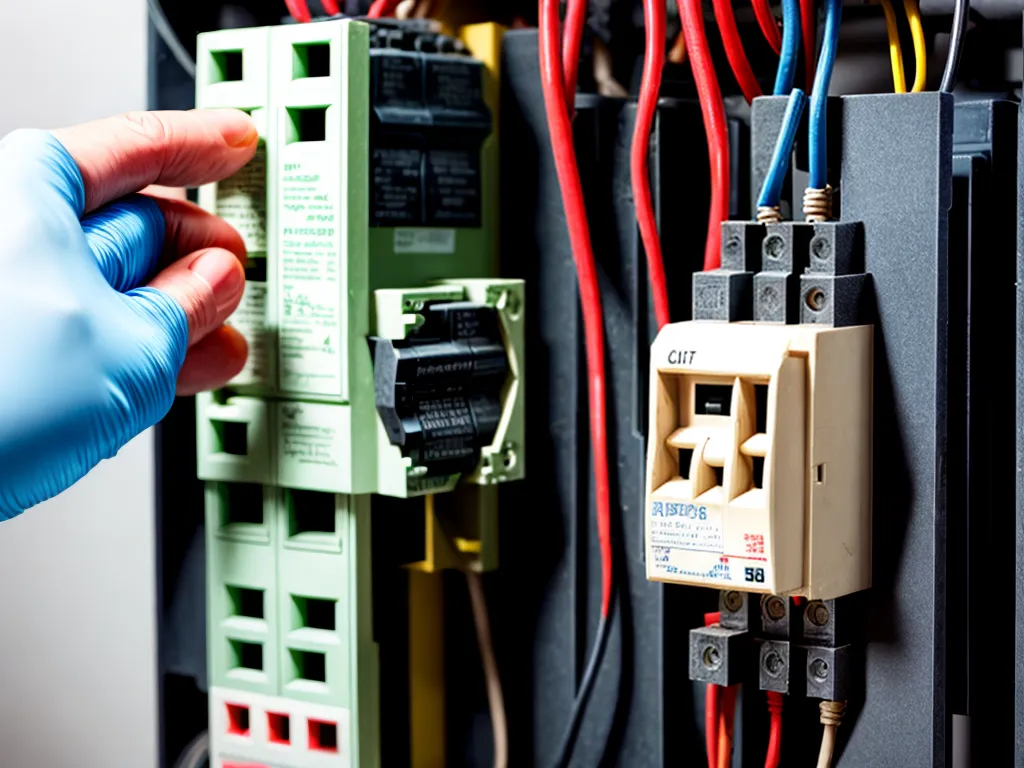
How to Troubleshoot Unlabeled Circuit Breakers in Your Electrical Panel
Introduction
Finding an unlabeled circuit breaker in your electrical panel can be very frustrating. Not knowing what each breaker controls makes it difficult to reset tripped breakers or turn off power to do electrical work. However, with some investigation and testing, you can identify and label unlabeled circuit breakers yourself.
In this article, I will walk through the full process of troubleshooting unlabeled circuit breakers in a step-by-step manner. I will cover:
- Safety precautions when working in an electrical panel
- Equipment needed for circuit breaker troubleshooting
- Systematic methods for identifying unlabeled breakers
- Tips for creating a detailed circuit breaker label
With the right approach, you can create an accurately labeled electrical panel that will make future electrical work much easier.
Safety Precautions When Working in an Electrical Panel
Whenever you open the cover of your electrical panel, it’s crucial to follow proper safety practices. The panel contains live high-voltage wires and touching the wrong component can result in severe shock or electrocution.
Here are some important safety steps to take:
- Turn off the main circuit breaker switch before accessing your panel, to cut power.
- Use a non-contact voltage tester to double-check that power is off.
- Never work on an electrical panel while standing in water or on wet ground.
- Wear electrical gloves and use insulated tools when handling any components.
- Have another person serve as a safety observer while you work.
- Replace the panel cover before restoring main power.
Working safely is essential - take your time and be cautious when troubleshooting inside an electrical panel.
Equipment Needed for Circuit Breaker Testing
To properly troubleshoot unlabeled breakers, you need the right gear:
- Non-contact voltage tester - To verify power is off before work, and check for current.
- Plug-in circuit tester - For checking which outlets/fixtures each breaker controls.
- Electrical gloves - Protect your hands from accidental contact.
- Insulated tools - Like screwdrivers, for safely handling wires if needed.
- Digital multimeter - For testing voltage, resistance, and continuity.
- Circuit breaker labeling kit - Contains template labels, marker, etc.
I recommend having a detailed panel directory to reference during troubleshooting. If you don’t have one, draw up a basic panel map showing the layout of all circuit breakers.
Methods for Identifying Unlabeled Circuit Breakers
With your supplies gathered, you’re ready to start identifying mystery breakers. Here are some approaches:
1. Check Half-Tripped Breakers
Look for any circuit breakers that are switched halfway between “On” and “Off”. This indicates a half-tripped breaker, which likely caused an outage on its circuit.
Turn each suspected half-tripped breaker fully Off and then On again. Then check rooms to see where power is newly restored, which reveals what the breaker controls.
2. Turn Off Breakers One-by-One
Shut off individual unlabeled breakers and see which rooms lose power when each one is switched off. This lets you map each breaker to the outlets/lights on its circuit.
Make sure to communicate with others in the home during testing so they can report what's powering off.
3. Use a Plug-In Circuit Tester
This simple device lets you plug into an outlet and see which breaker is connected to it. With the main power on, plug the tester into various outlets and switch off breakers until the indicator light turns off, telling you which breaker it’s linked to.
Trace all dead outlets after flipping each breaker Off to map the connections.
4. Use a Digital Multimeter
For breakers powering 240V appliances, use a multimeter switched to AC voltage mode. With the main on, probe the hot terminals on each double-pole breaker to measure voltage.
Then power those appliances off/on to see which breaker leads to an appliance losing/regaining power.
5. Check Wire and Terminal Colors
The hot wires connected to each breaker are color-coded. The terminal screws where wires attach are also color-coded to match. This can provide clues about which circuits breakers control.
6. Inspect Your Electrical Panel Documentation
Any notes, labels, and diagrams left by the electrician who installed your panel provide useful clues about how circuits are laid out. Try to interpret and match their color coding or terminology.
Creating Detailed Circuit Breaker Labels
Once you’ve identified a breaker’s circuit, clearly label it for future reference. Here are some tips:
-
Note the main device or room powered, like “Bathroom GFCI outlets” or “Kitchen lights”.
-
List all outlets affected, i.e. “Living room & dining room outlets”.
-
Add the breaker amperage and any dual 240V connections.
-
Use durable label materials like plastic sleeves and permanent marker.
-
Make labels consistent and legible. Use a label-maker for uniform results.
Keep your panel directory updated as you troubleshoot unlabeled breakers. Consider photographing your finished panel to have a visual record.
Conclusion
Troubleshooting unlabeled circuit breakers takes time and care, but following these steps methodically makes it manageable. Always put safety first by killing main power and double-checking that outlets are dead before working.
With the right gear, keen observation, and systematic testing, you can tame your electrical panel’s mystery breakers. Just be diligent about precise labeling for yourself and future homeowners.